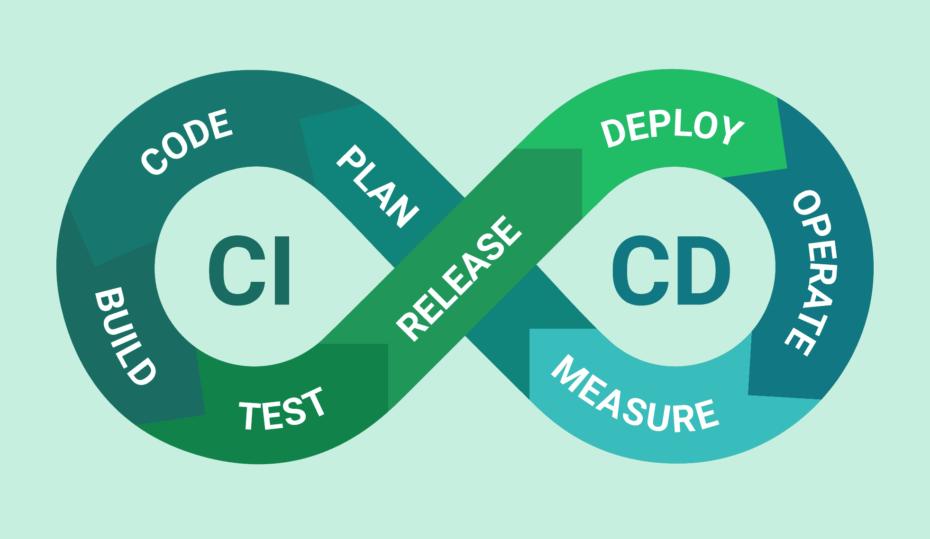In the fast-paced world of software development, efficiency and reliability are crucial. CI/CD pipelines have emerged as essential tools to streamline the development process, reduce errors, and accelerate the delivery of high-quality software. This article explores the benefits of CI/CD pipelines, key components, and best practices to optimize your development workflow.
CI/CD pipelines are a cornerstone of Enozom’s software development strategy, enabling the company to deliver high-quality software at a rapid pace. By automating key aspects of the development process, Enozom reduces manual effort, enhances code quality, and ensures that its software products meet the highest standards.
What are CI/CD Pipelines?
CI/CD pipelines automate the process of integrating code changes, testing them, and deploying the application to production. This approach minimizes manual intervention, reduces the risk of human error, and ensures that code changes are consistently validated and deployed.
- Continuous Integration (CI): Developers frequently integrate code into a shared repository. Each integration triggers an automated build and testing process, allowing teams to detect errors early.
- Continuous Deployment/Delivery (CD): Once the code passes the CI phase, it is automatically deployed to a staging environment (Continuous Delivery) or directly to production (Continuous Deployment), depending on the pipeline configuration.
Benefits of CI/CD Pipelines
Faster Time-to-Market: Automating the integration, testing, and deployment processes significantly reduces the time required to deliver new features and fixes. This enables teams to respond quickly to market demands and customer feedback.
Improved Code Quality: Automated testing and validation ensure that only code that meets the required standards and passes all tests is deployed, leading to more stable and reliable software.
Reduced Manual Effort: By automating repetitive tasks, CI/CD pipelines free up developers to focus on writing code and solving complex problems rather than managing the integration and deployment process.
Early Detection of Bugs: Continuous testing during the CI phase allows teams to identify and fix bugs early in the development cycle, reducing the cost and complexity of addressing issues later on.
Consistent Environments: CI/CD pipelines help maintain consistent environments across development, testing, and production by automating environment setup and configuration.
Key Components of a CI/CD Pipeline
Version Control System (VCS): A VCS like Git is the foundation of a CI/CD pipeline, enabling developers to collaborate and manage code changes efficiently. Branching strategies (e.g., Gitflow) play a crucial role in how code progresses through the pipeline.
Automated Build Tools: Tools like Jenkins, CircleCI, or GitHub Actions are used to automate the build process. These tools compile the code, resolve dependencies, and package the application for deployment.
Automated Testing: Testing is a critical part of CI/CD pipelines. Automated tests—unit, integration, and end-to-end—are executed to validate the functionality, performance, and security of the code.
Artifact Repository: An artifact repository (e.g., JFrog Artifactory, Nexus) stores the build artifacts generated during the CI process, making them available for deployment in the CD phase.
Deployment Automation: Tools like Kubernetes, Docker, and Ansible are used to automate the deployment process, ensuring that the application is consistently deployed across different environments.
Monitoring and Alerting: Continuous monitoring tools like Prometheus, Grafana, or Datadog help track the performance and health of applications in production. Alerts are triggered if anomalies are detected, allowing teams to respond quickly.
Best Practices for Optimizing Your CI/CD Pipeline
Adopt a Trunk-Based Development Model: Instead of maintaining long-lived branches, encourage developers to work on a single branch (trunk) and integrate changes frequently. This reduces merge conflicts and makes it easier to identify integration issues early.
Implement Incremental Changes: Small, incremental changes are easier to test, review, and deploy. This practice reduces the risk of introducing bugs and makes it easier to rollback changes if needed.
Prioritize Test Automation: Invest in a comprehensive suite of automated tests that cover various aspects of your application. Ensure that tests run quickly and provide actionable feedback to developers.
Use Feature Toggles: Feature toggles (or flags) allow you to deploy code changes to production without immediately enabling new features. This approach minimizes the risk of deploying unfinished or buggy features.
Parallelize Testing: To speed up the CI process, parallelize test execution where possible. Running tests concurrently can significantly reduce the time required to validate changes.
Enforce Code Quality Standards: Integrate code quality tools like SonarQube or ESLint into your CI pipeline to enforce coding standards, identify potential issues, and maintain a high level of code quality.
Ensure Environment Parity: Maintain consistency between development, staging, and production environments. Use tools like Docker or Vagrant to create reproducible environments, reducing the “works on my machine” syndrome.
Automate Rollbacks: Despite the best efforts, deployments can fail. Implement automated rollback mechanisms to quickly revert to a previous stable version if a deployment causes issues.
Monitor Pipeline Performance: Regularly review and optimize your CI/CD pipeline’s performance. Identify bottlenecks, slow tests, or failing stages that could be impacting the overall speed and reliability of your pipeline.
Foster a DevOps Culture: CI/CD is not just about tools—it’s also about culture. Encourage collaboration between development, operations, and QA teams to ensure everyone is aligned and focused on delivering high-quality software.
Conclusion
CI/CD pipelines are essential for modern software development, enabling teams to deliver high-quality software rapidly and reliably. By automating key aspects of the development process, CI/CD pipelines reduce manual effort, improve code quality, and shorten the time-to-market for new features and fixes.
Optimizing your CI/CD pipeline involves adopting best practices such as trunk-based development, test automation, and environment parity. By continuously monitoring and refining your pipeline, you can ensure that it meets the evolving needs of your development team and supports the rapid delivery of high-quality software.
